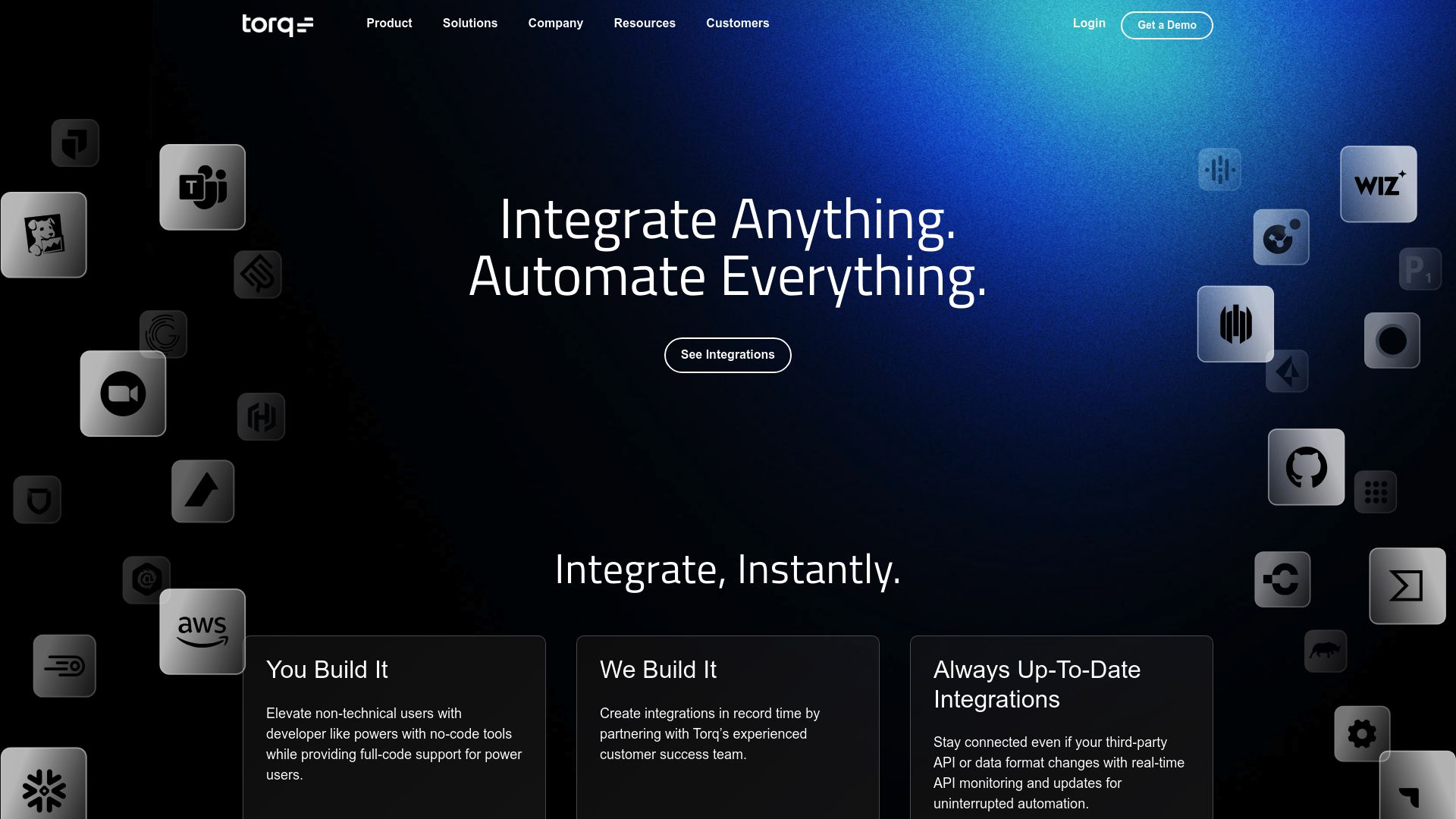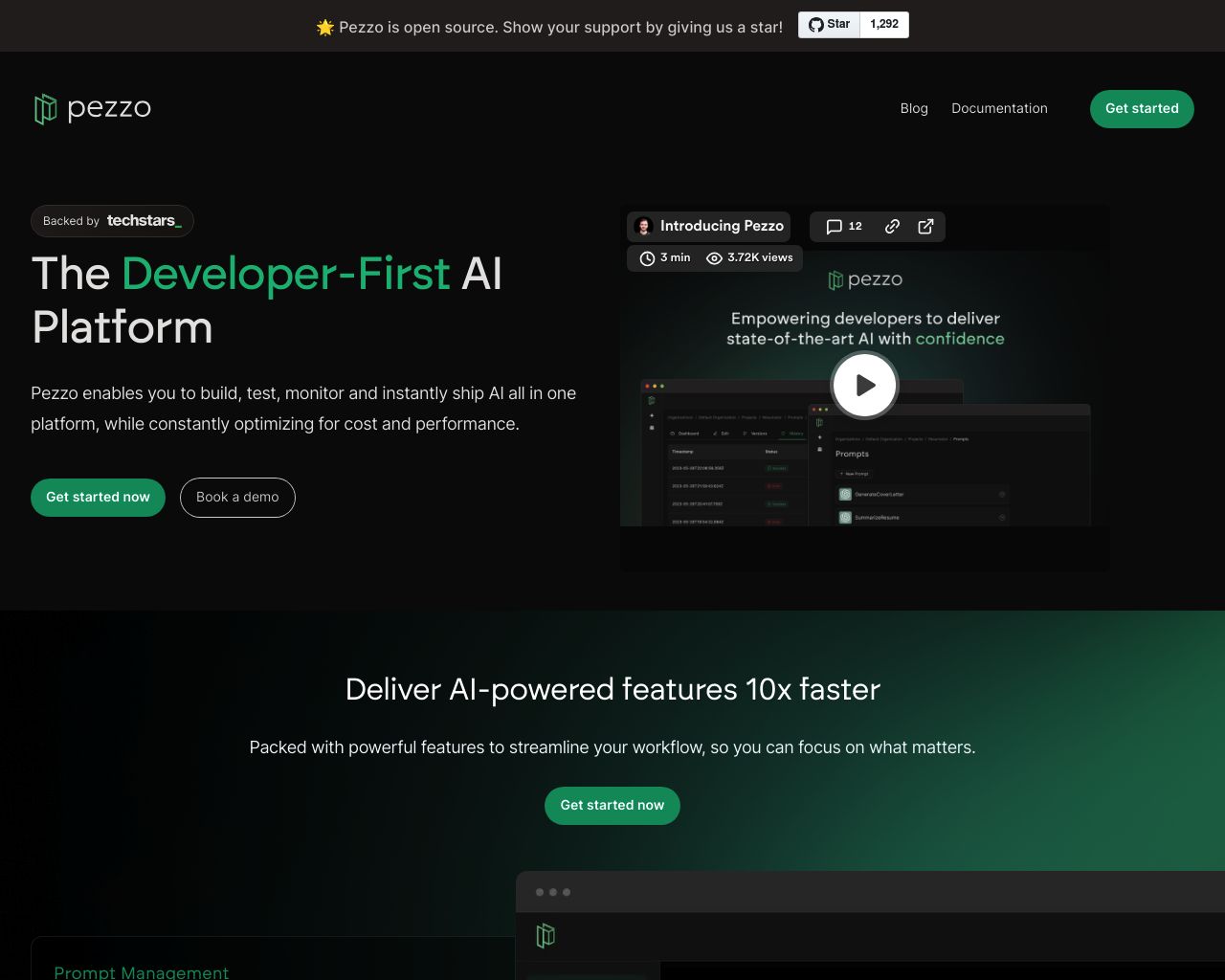Torq Hyperautomation vs. Pezzo: Security and AI Development Compared
AI and automation technologies rapidly transform business operations, with powerful platforms emerging to address diverse needs. This comparison explores Torq Hyperautomation’s security-focused approach, Pezzo’s AI development toolkit, and SmythOS’s comprehensive solution. We examine how each platform tackles automation challenges, evaluating their strengths in areas like workflow orchestration, prompt management, and AI agent capabilities. By analyzing key features, integration options, and use cases, this review equips readers to choose the ideal platform for their specific requirements, whether in cybersecurity, AI development, or broader automation initiatives.
Torq Hyperautomation Overview
Torq Hyperautomation delivers a powerful security-focused hyperautomation platform for enterprise organizations. This no-code solution empowers security teams to create sophisticated workflows that automate incident response, threat detection, and complex security processes.


Torq’s visual workflow designer enables security professionals to build intricate automation sequences without writing code. Users can leverage an extensive library of pre-built integrations to connect Torq with existing security tools and data sources. This approach accelerates the development of custom security playbooks tailored to an organization’s specific needs and infrastructure.
Torq’s visual workflow designer enables security professionals to build intricate automation sequences without writing code.
The platform shines in its ability to orchestrate responses across multiple security systems. When an incident occurs, Torq can automatically gather data from relevant sources, analyze the threat, and initiate appropriate remediation steps—all without human intervention. This rapid, coordinated response significantly reduces the mean time to detect and resolve security issues.
While Torq excels in security automation, it lacks some of the broader AI agent capabilities found in more general-purpose platforms. The focus on security workflows means it may not be as suitable for organizations seeking a versatile tool for diverse automation needs beyond cybersecurity. Additionally, the enterprise-grade nature of the platform could make it less accessible for smaller teams or individual developers looking for a more lightweight solution.
Torq Hyperautomation positions itself as a leader in the security orchestration and automated response (SOAR) market. Its strengths lie in its deep security integrations, scalability for large enterprises, and ability to handle complex, multi-step security processes. However, organizations should consider their specific use cases and evaluate whether Torq’s security-centric approach aligns with their broader automation goals.
Pezzo Overview
Pezzo empowers developers to streamline AI development through an open-source toolkit. The platform tackles key challenges in AI implementation by offering robust prompt management, version control, and collaboration features.


Pezzo’s standout capabilities include effortless prompt and version management, allowing developers to handle AI prompts efficiently. This accelerates the delivery of AI solutions by maintaining version control and ensuring teams work with the most up-to-date prompts. The platform also offers conversion-boosting tools through A/B testing, targeting, and experiments, enabling users to optimize their AI models’ performance.
Pezzo’s standout capabilities include effortless prompt and version management, allowing developers to handle AI prompts efficiently. This accelerates the delivery of AI solutions…
Cost optimization features help users maximize efficiency in AI operations, potentially reducing expenses by up to 50%. Pezzo enhances the development experience with real-time trading and charts, facilitating the integration of live data and analytics into AI models for deeper insights.
Comprehensive troubleshooting tools, including execution history, time-travel debugging, and test suites, allow developers to deploy AI models confidently. Pezzo’s focus on collaboration and transparency provides detailed observability into AI operations, reducing debugging time and helping teams pinpoint issues quickly.
While Pezzo excels in prompt management and development tools, it lacks some advanced features found in more comprehensive AI agent platforms. The absence of hosted AI agents, autonomous agent capabilities, and multimodal support may limit its applicability for complex AI deployments. Additionally, the platform does not offer built-in natural language processing or machine learning model training, which may require integration with external tools for certain AI applications.
Feature Comparison
Torq Hyperautomation and Pezzo offer distinct approaches to AI and automation, each with its own strengths and limitations. Torq focuses on security-centric hyperautomation, providing robust tools for orchestrating complex security workflows. Pezzo, on the other hand, specializes in streamlining AI development through prompt management and version control.
Torq excels in security automation, offering hosted agents for development and production environments, a visual workflow builder, and no-code capabilities. Its strength lies in orchestrating responses across multiple security systems, enabling rapid incident detection and resolution. However, Torq lacks AI agent capabilities and multimodal support, limiting its applicability outside the security domain.
Pezzo shines in prompt management and version control, crucial for efficient AI development. It offers collaboration features, A/B testing for prompts, and cost optimization tools. Unlike Torq, Pezzo provides features for AI model performance optimization. However, Pezzo does not offer hosted AI agents or autonomous agent capabilities, which may limit its use for complex AI deployments.
In terms of core components, Torq provides extensive API integrations and supports robotic process automation, while Pezzo focuses on prompt-centric development tools. For security, Torq naturally has a stronger offering with its security-focused design, while Pezzo’s security features are less prominent in the available information.
We offer a more comprehensive solution that combines the strengths of both platforms. Our hosted agents work across development and production environments, and we provide a visual builder with no-code options. Unlike Torq and Pezzo, we support autonomous agents, multi-agent collaboration, and multimodal capabilities. Our platform also includes advanced features like constrained alignment, foundation AI support, and a hosted vector database, addressing limitations in both Torq and Pezzo’s offerings.
Feature Comparison Table
| Torq Hyperautomation | Pezzo | SmythOS | |
|---|---|---|---|
| CORE FEATURES | |||
| Hosted Agents (Dev, Production) | ✅ | ❌ | ✅ |
| Visual Builder | ✅ | ❌ | ✅ |
| No-Code Options | ✅ | ❌ | ✅ |
| Memory & Context | ✅ | ❌ | ✅ |
| Autonomous Agents | ✅ | ❌ | ✅ |
| Explainability & Transparency | ❌ | ✅ | ✅ |
| Problem-Solving Capabilities | ❌ | ✅ | ✅ |
| Human-AI Interaction | ❌ | ✅ | ✅ |
| SECURITY | |||
| Constrained Alignment | ✅ | ❌ | ✅ |
| IP Control | ✅ | ❌ | ✅ |
| COMPONENTS | |||
| Huggingface AIs | ❌ | ✅ | ✅ |
| Zapier APIs | ❌ | ✅ | ✅ |
| All other APIs, RPA | ❌ | ✅ | ✅ |
| Logic | ❌ | ✅ | ✅ |
| Data Lakes | ✅ | ❌ | ✅ |
| DEPLOYMENT OPTIONS (EMBODIMENTS) | |||
| Deploy as API | ❌ | ✅ | ✅ |
| Production Domains | ❌ | ✅ | ✅ |
| API Authentication (OAuth + Key) | ❌ | ✅ | ✅ |
| Deploy as Scheduled Agent | ❌ | ❌ | ✅ |
| Scalability | ❌ | ✅ | ✅ |
| DATA LAKE SUPPORT | |||
| Hosted Vector Database | ✅ | ❌ | ✅ |
| Sitemap Crawler | ❌ | ❌ | ✅ |
| YouTube Transcript Crawler | ❌ | ❌ | ✅ |
| URL Crawler | ❌ | ✅ | ✅ |
| PDF Support | ❌ | ✅ | ✅ |
Best Alternative to Torq Hyperautomation and Pezzo
SmythOS stands out as the superior alternative to Torq Hyperautomation and Pezzo, offering a comprehensive AI agent development platform that combines the strengths of both while addressing their limitations. Our platform empowers users to create, deploy, and manage sophisticated AI agents with unparalleled ease and flexibility.
Unlike Torq’s narrow focus on security automation or Pezzo’s emphasis on prompt management, SmythOS provides a versatile toolkit for building AI agents across various domains. We offer hosted agents for both development and production environments, coupled with a powerful visual builder and no-code options. This combination democratizes AI development, making it accessible to technical and non-technical users alike.
SmythOS provides a versatile toolkit for building AI agents across various domains… democratizes AI development, making it accessible to technical and non-technical users alike.
SmythOS excels in advanced AI capabilities that neither Torq nor Pezzo fully address. Our platform supports autonomous agents, multi-agent collaboration, and multimodal interactions, enabling the creation of more sophisticated and adaptable AI solutions. We integrate seamlessly with foundation models from providers like OpenAI and Hugging Face, offering a broader range of AI capabilities than our competitors.
Security and scalability are paramount in SmythOS. We implement robust security measures, including constrained alignment and data encryption, ensuring your AI agents operate within defined parameters and handle sensitive data responsibly. Our scalable architecture supports enterprise-level deployments, allowing your AI solutions to grow alongside your business needs.
With SmythOS, we’ve eliminated the limitations found in Torq and Pezzo. Our platform offers extensive API integrations, supports various deployment options, and includes a hosted vector database for efficient data management. Whether you’re building chatbots, automating complex workflows, or developing cutting-edge AI applications, SmythOS provides the tools and flexibility to bring your vision to life quickly and efficiently.
Conclusion
Torq Hyperautomation and Pezzo offer unique solutions in the AI and automation landscape, each with distinct strengths. Torq excels in security-focused hyperautomation, providing robust tools for orchestrating complex security workflows. Pezzo, on the other hand, shines in streamlining AI development through efficient prompt management and version control.
While both platforms offer valuable features, they also have limitations. Torq’s security-centric approach may not suit organizations seeking versatile automation beyond cybersecurity. Pezzo’s focus on prompt management, while powerful for AI development, lacks some advanced features found in more comprehensive AI platforms.
SmythOS emerges as a superior alternative, combining the strengths of both platforms while addressing their limitations. Our solution offers hosted agents for development and production, a visual builder with no-code options, and support for autonomous agents and multi-agent collaboration. Unlike Torq and Pezzo, we provide multimodal capabilities, constrained alignment, and a hosted vector database, making SmythOS a more comprehensive and versatile choice for organizations looking to harness the full potential of AI and automation.
To experience the power and flexibility of SmythOS, we invite you to explore our diverse range of AI-powered agent templates. These templates cover multiple business categories and are designed to streamline processes across various functions. For those ready to take the next step, you can create a free SmythOS account and start building AI agents with no time limit or risk. Discover how SmythOS can revolutionize your approach to AI and automation today.
Last updated:
Disclaimer: The information presented in this article is for general informational purposes only and is provided as is. While we strive to keep the content up-to-date and accurate, we make no representations or warranties of any kind, express or implied, about the completeness, accuracy, reliability, suitability, or availability of the information contained in this article.
Any reliance you place on such information is strictly at your own risk. We reserve the right to make additions, deletions, or modifications to the contents of this article at any time without prior notice.
In no event will we be liable for any loss or damage including without limitation, indirect or consequential loss or damage, or any loss or damage whatsoever arising from loss of data, profits, or any other loss not specified herein arising out of, or in connection with, the use of this article.
Despite our best efforts, this article may contain oversights, errors, or omissions. If you notice any inaccuracies or have concerns about the content, please report them through our content feedback form. Your input helps us maintain the quality and reliability of our information.
